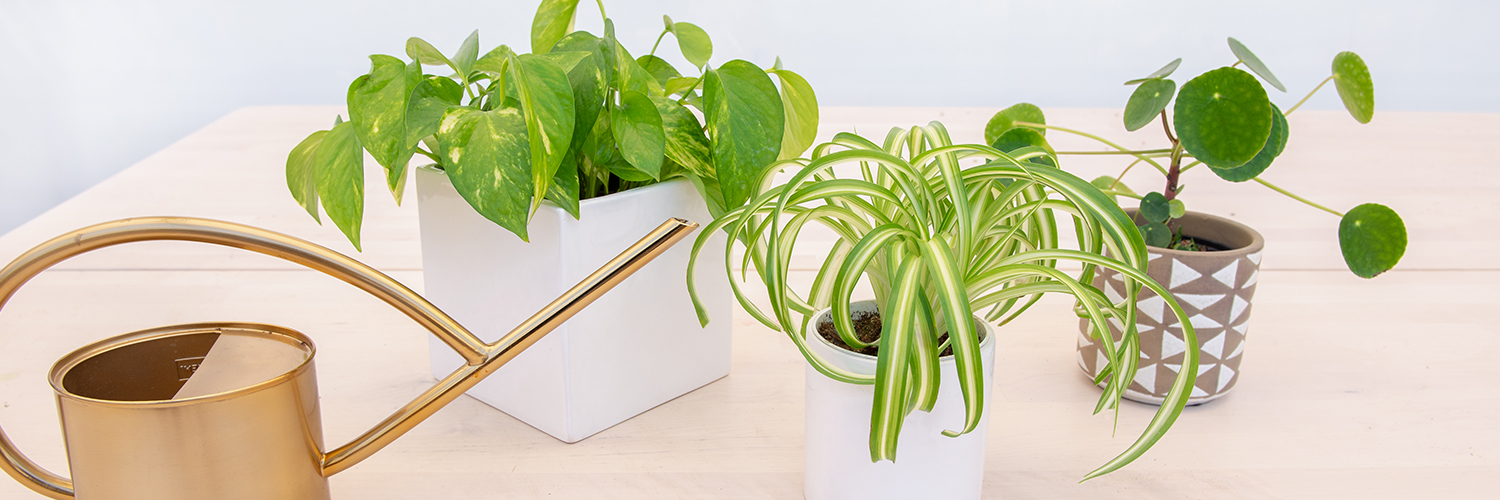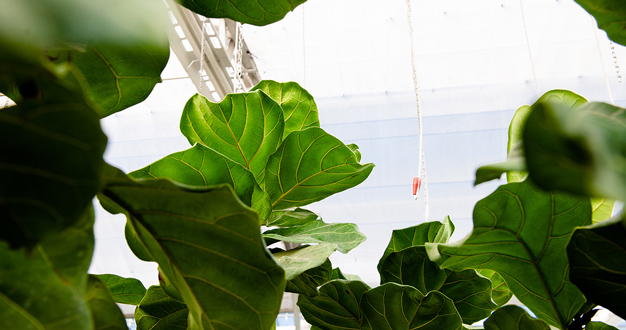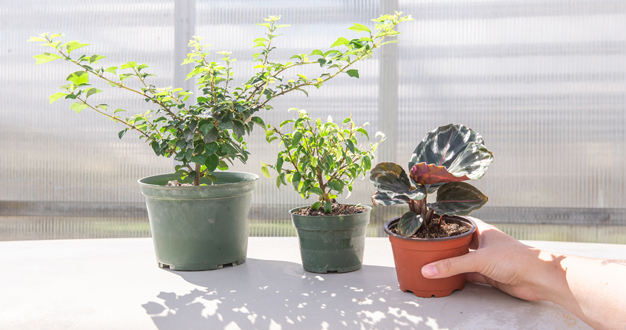
Each time we take home a new houseplant, one of the first questions we ask is “How often should I water it?” It’s a loaded question because the real answer is rarely as simple as “once a week” or “twice a month.” Knowing when to water is much less about following a schedule and more about getting to know your plant and its changing environment – understanding how things like light, temperature, and the plant’s own growth and natural preferences create a dynamic relationship, all affecting how often your plant really wants a drink. Here, we share a few tips for knowing when and how to water so every drink is a good one.

Follow Their Lead
In a diverse collection, each type of plant will have its own preference for soil moisture. For example, most tropical houseplants want the top quarter to half of soil to dry between waterings, but maidenhair ferns and carnivorous plants need consistently moist soil, and cacti like their soil to dry completely between drinks. A slender wooden dowel is an easy tool for testing the moisture level in a plant’s soil. Just poke the dowel into the soil, pull it back out, and examine – you’ll see how far down the soil is moist in the pot.
And, it may seem strange to think your houseplant can “talk” to you about its needs, but the more you interact with them, the more you’ll find that it’s true. Some plants are great communicators when they need attention. Houseplants like peace lily, pilea, spider plant, and pothos will droop when they’re feeling thirsty. Others may take on a duller tone or, in the case of jade, shrivel just a little when it’s time for a drink.
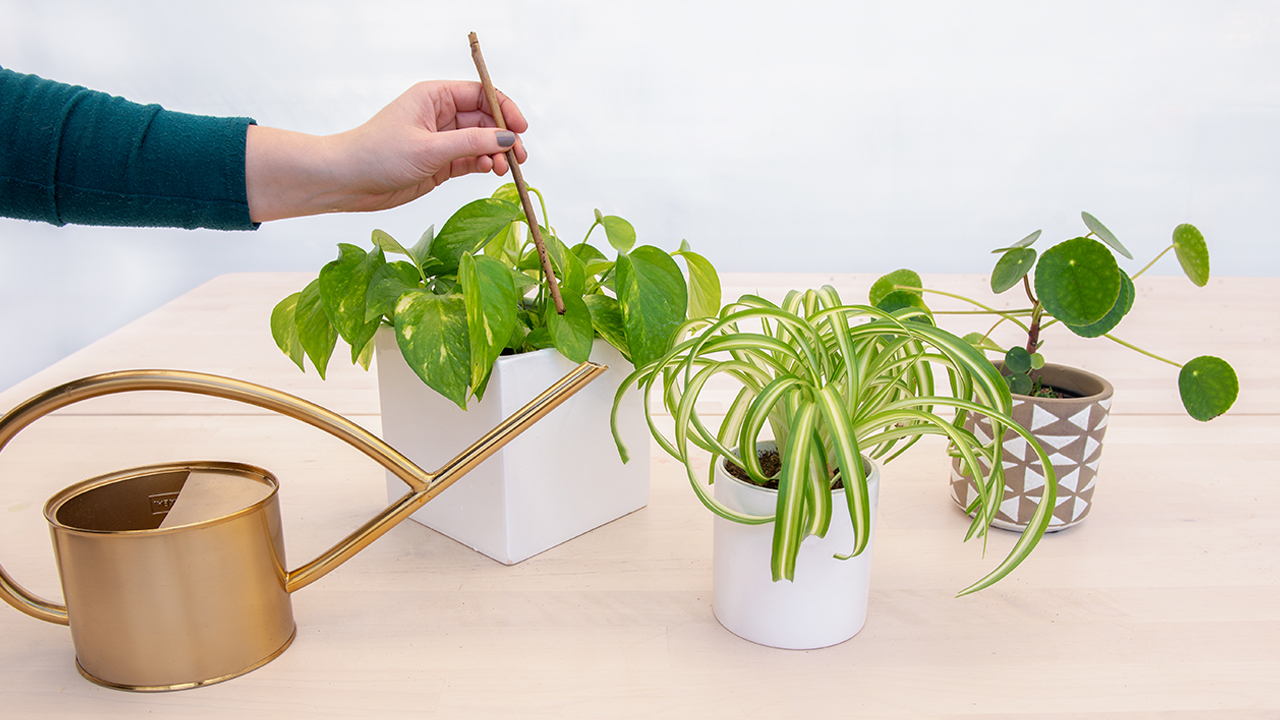
Consider the Environment
The environment in your home has a big effect on how much water a particular plant uses – and in climates like ours, that environment changes throughout the year. Bright light and high temperatures increase the plant’s need for water, while high humidity decreases it. Even the material of the pot can affect how often we water. Porous clay pots – like terra cotta – wick moisture out of the soil and release it into the air faster than plastic or glazed ceramic pots.
Keep in mind that even indoors, light, temperature, and humidity vary with the seasons as the angle of the sun changes and we turn on our air conditioner or furnace. So a plant that needs a drink once a week in the summer may need a drink much less often in the winter when sunlight is less intense. A plant that sits near a furnace vent may want water more often than the same plant in a cooler location. Again, the key is to interact with your plant – testing the soil, watching for thirsty signals – rather than following a constant schedule all year long.
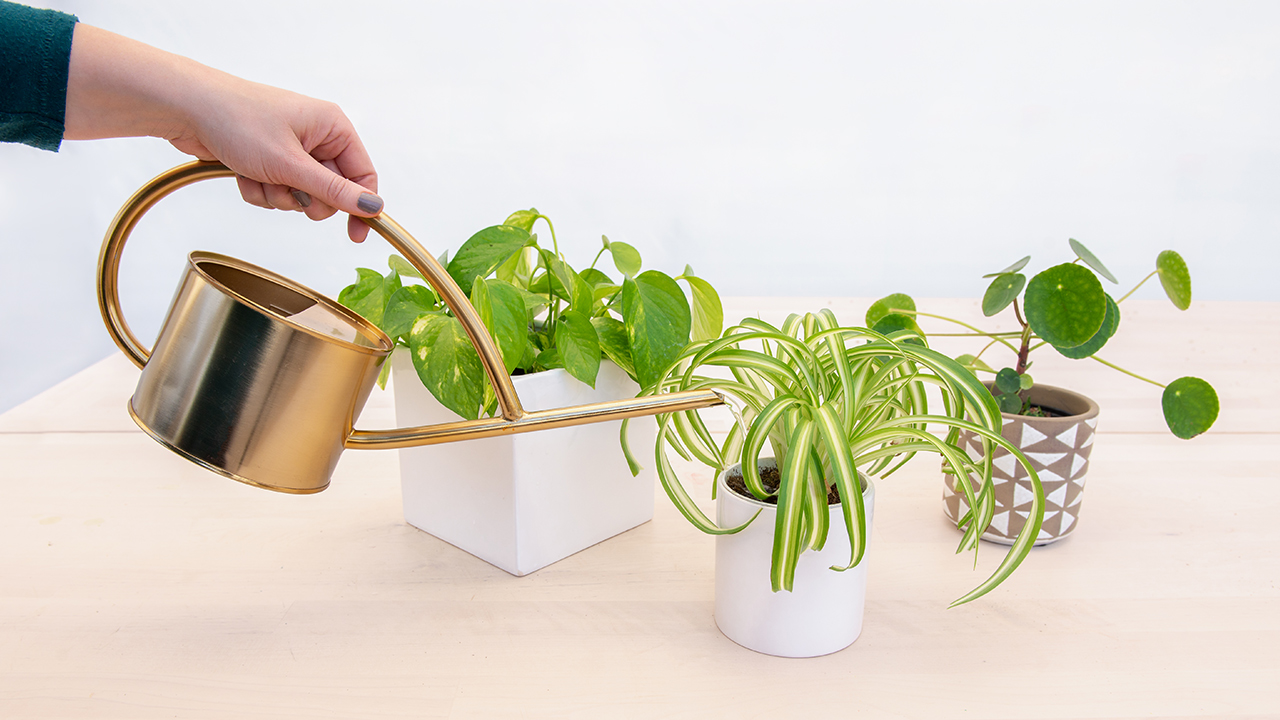
How is as Important as When
When it’s time for a drink, almost every houseplant wants the same thing – a thorough soaking until the excess water drains from the drain holes in the pot. Then, be sure to remove any water from the saucer to avoid letting the soil soak up extra water. After that, let the soil dry to the plant’s preferred moisture level before watering again. This approach encourages a full, healthy root system by allowing moisture to reach all the way to the bottom of the pot – even for drought-loving plants like cacti.
But a lot of decorative pots are made without drain holes. When excess water has nowhere to go, it can potentially drown the plant’s roots, leading to root rot and death of the plant. Instead of planting directly into a pot without drain holes, we recommend leaving your plant in its plastic grow-pot, then staging it in the decorative container so it can be removed as needed for watering. If you choose to plant directly into a pot without a drain hole, maintaining the right moisture level is a little trickier, but not impossible. Darryl Chan, creator of House Plant Journal, suggests a different approach that we like to use. To moisten the soil without creating excess, carefully add an amount of water equal to about one-quarter to one-third of the volume of soil in the pot. And apply the water evenly around the pot so all parts of the root system get a share.
The Key to Success
Understanding that balance between water and the conditions in your home – as it relates to the needs of your plant – is arguably the most important key to keeping a healthy houseplant collection. If you have questions about when or how to water the plants in your own collection, feel free to ask! Just give us a call or stop in – we’re happy to help.

